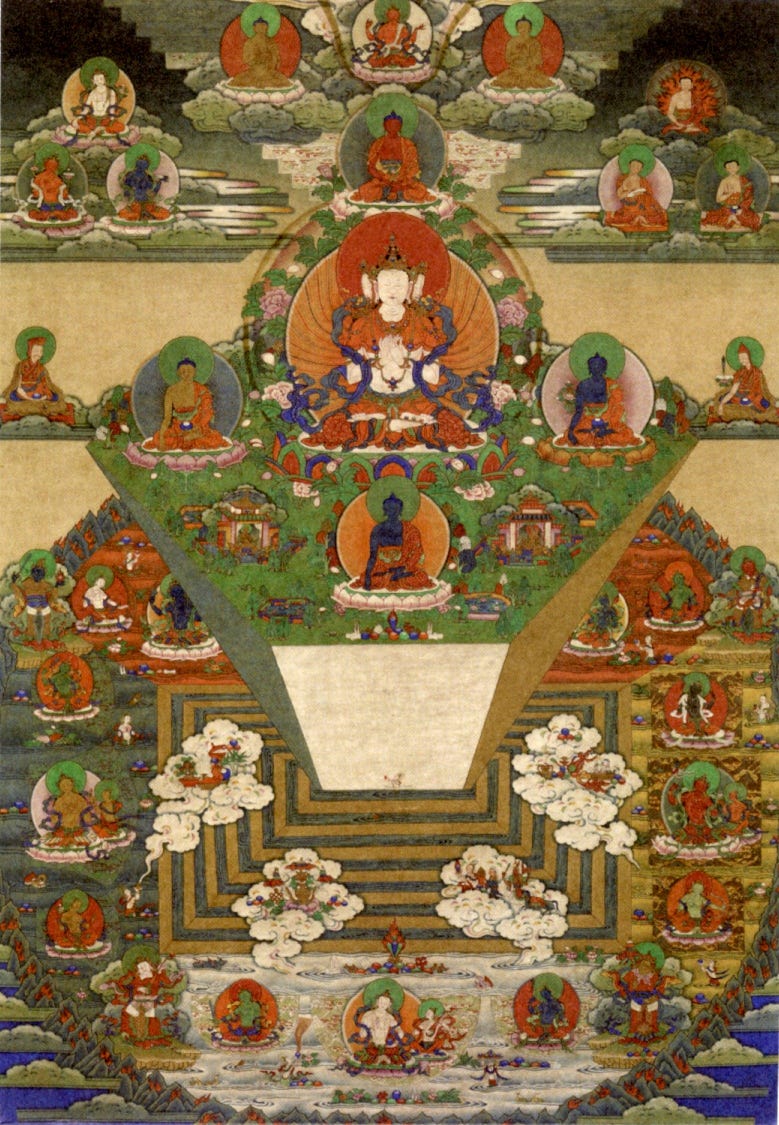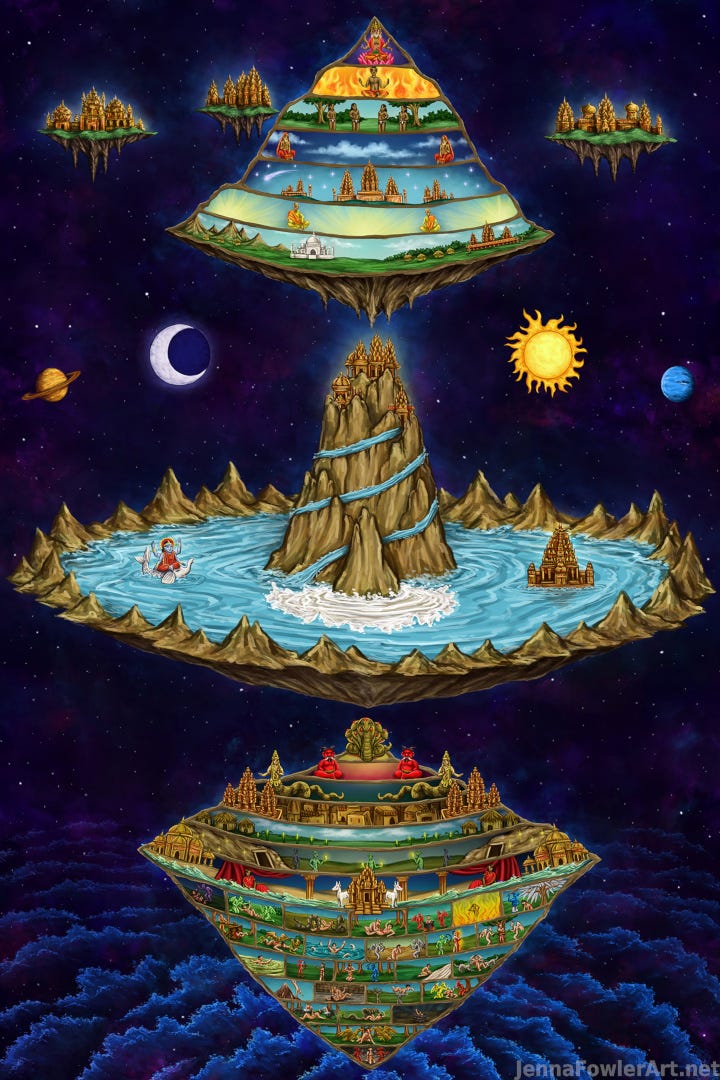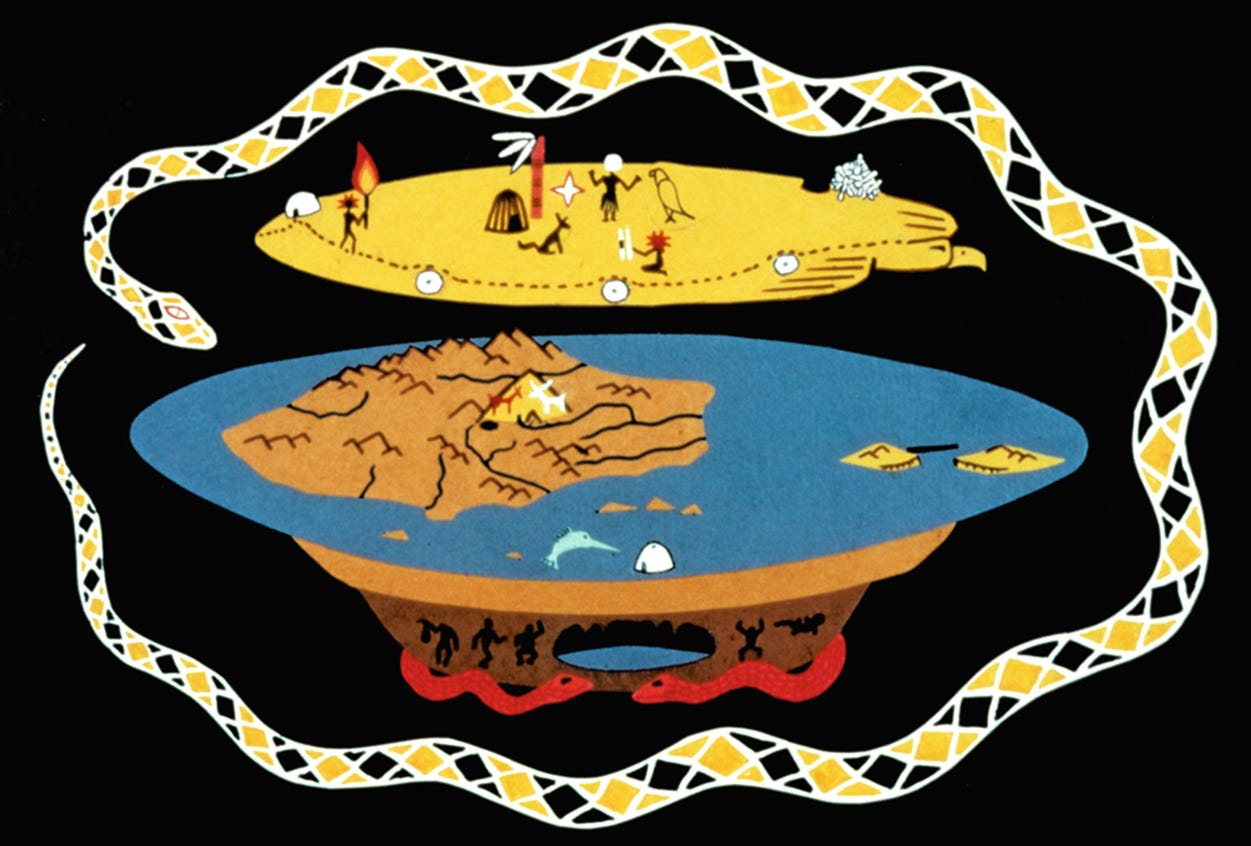Is the Earth flat? (The Intriguing Vedic Universe, ch.6)
One difficulty with the description of the universe given in the Puranas is that it can be easily misunderstood as a description of a flat Earth. This is however not what the model is.
'The Intriguing Vedic Universe' was my first book on Vedic cosmology, explaining the mysterious universe described in the Srimad Bhagavatam. It describes not just the physical aspects, in a level of detail that rivals modern science, but also the metaphysical aspects, the missing aspect that is missing in the modern perspective.
Chapter 6: Is the Earth flat?
One difficulty with the description of the universe given in the Puranas is that it can be easily misunderstood as a description of a flat Earth. Such misunderstanding is very common since the subtle aspects of the Vedic Universe are rather difficult to comprehend.
One may be then tempted into a simplistic conclusion that the Earth is flat because that's what he understands when he reads Srimad Bhagavatam, while others may be propense to reject the teachings because it doesn't match his view of the cosmos. Both are mistaken.
Many things we take as irrevocable facts can be different or even opposite in different contexts. For example, we all learn that water boils at 100 degrees Celsius and this can easily be proved by just boiling some water and checking the temperature with a thermometer, right? Well, not exactly. For most of us, the water will not boil at 100 degrees, but at 99.5, 98, 95, or even 87, according to the altitude one lives. One would have a hard time cooking a meal on top of Mount Everest, for example, since there the water boils at just 68 degrees!
Things are also different according to the point of view. For example, we understand that as a planet, the Earth is spherical. However, for one who is standing on the ground, it appears quite flat. Since the earth is so big, the curvature can only be seen if one goes quite high. Although the earth is spherical, islands and continents are not, therefore one who lives on an island like Mauritius or Seychelles actually lives in a flat structure that is part of a spherical planet.
Similarly, the spherical earth is part of a flat structure: the solar system, which in turn is part of an also relatively flat structure: the Milky Way galaxy. Therefore, one's concept of living in a flat or spherical structure, as well as any description created by him, can vary according to which level he is speaking about. One can say that he lives on a flat island, that is part of a spherical planet, that is part of a flat solar system, and the three statements are going to be simultaneously true.
Such apparent contradictions are also found in the Vedic literature, where our cosmic house is described as spherical or flat according to the context. The Earth itself is described as Bhu-Gola, which can be translated as "the earthly globe", but it's also stated that our planet is part of a bigger structure called Jambudvipa, which in turn is part of an even bigger structure called Bhu-Mandala. Both Jambudvipa and Bhu-Mandala lie on a flat plane. Such structures cannot be observed from our dimension, therefore when we look into the sky we see only the vastness and darkness of space, but according to the Vedas, higher beings can see such subtle structures, and thus their view of reality is very different from ours.
As Srila Prabhupada mentions in a morning walk (December 9, 1973, Los Angeles):
"In Vedic literature it is bhu-gola, jagad-anda. These words are there. We can see also it is round, jagad-anda. The universe is round. And Goloka. Or Bhu-gola. Bhū-gola, the earth is round. So in the Vedic literatures... Therefore their knowledge is also imperfect because they do not refer to the Vedic literatures. It is already there. Bhu-gola. Bhu means the earth; gola means round. It is already there. And the geography's called, according to Sanskrit, it is called Bhu-gola. Long, long ago, before Galileo."
Therefore, just like one can simultaneously live on a flat island, on a spherical planet, and on a flat solar system, one also lives simultaneously on a spherical earth which is part of a larger flat structure. There is the round Bhu (Bhu-Gola) and the flat Bhu (Bhu-Mandala), and both exist simultaneously. As human beings, we have access only to the gross dimension, and thus we can see only the earthly globe where we live, but higher beings can see more, and their understanding of reality is different from ours. Their view of the Universe is conveyed in books like the Srimad Bhagavatam, and thus such books of knowledge describe a reality that does not directly correspond to what we can observe using our human senses.
Thus, different levels of reality are described with the same words, and one can pick one or the other according to his level of understanding. This is simultaneously one of the most intriguing, and one of the most difficult to understand aspects of the Vedic literature.
Another interesting point to be observed is how the view of the Universe of different people from antiquity was similar. The Vedas explain that before the beginning of Kali-yuga, our present age, different peoples of antiquity were part of a global Vedic culture, and thus had access to the same knowledge. This explains how different groups had similar views of the universe, from the Chinese to the American Indians, including practically everyone in between. The Vedas explain that all these ancient civilizations were once connected with the Vedic culture. They had thus access to the same knowledge about the structure of Bhu-Mandala.
With the passage of time, however, the advanced concepts were forgotten and these different civilizations became stuck with a flat earth concept, imagining our universe as some kind of flat island with the abode of the Gods above, demons living below in subterranean abodes, and some kind of great mountain in the middle.
The Universe, as conceived by the ancient Chinese (top), Nordic people, Native American Indians, and Mayas (bottom)
This concept ended up being described also in the Bible and the Quran, leading to the modern flat-Earth theories. Flat earthers are thus actually not completely wrong, the problem is that they base their beliefs on impoverished incomplete descriptions of the Vedic Cosmos, failing to understand its higher aspects.
On the other hand, the modern view of the cosmos is purely based on our sense perception, which leads to a mechanistic view of the Universe that discards all the subtle and spiritual aspects. Many instinctively disagree with this materialistic explanation and start looking for a more holistic view of the cosmos, that accounts for the subtle dimensions they can understand and sometimes even perceive.
It’s not a wonder thus that there is a growing interest in Vedic Cosmology. The Vedas offer a much more complete view of the Universe, which accounts for both gross and subtle aspects and allows for the expansion of our consciousness. By meditating on the subtle aspects of the Universe described in the Vedas, one can gradually elevate his consciousness and attain the same level of awareness as higher beings. Conversely, the materialistic view of the universe offered by modern science offers one a dead universe, which leads only to the stagnation of one's consciousness.
The fact that our planet is a globe also illustrates another concept given in the Vedas. We think we are imprisoned on this planet because of the law of gravity, but actually, we are prisoners of our own consciousness. One who tries to access higher realms by mechanical means will not be able to go anywhere, just like a person who tries to escape our planet by walking will just come back to the same place after circumambulating the globe. He may even go to Mars or Venus, but without changing his consciousness he will remain stuck in this gross dimension and will not be able to find anything interesting there. Real freedom is thus connected with the expansion of one’s own consciousness. Without a change in consciousness, one may go anywhere in the cosmos, but he will remain in prison.
The great contribution of the model of the universe given in the Puranas is that it gives a mystical and theistic view of the universe, a universe that is teeming with life. By meditating on these descriptions, one can gradually elevate his consciousness and attain the same level of awareness as higher beings.
The great challenge when we study the model of the universe given in the Srimad Bhagavatam is to reconcile what we can observe with our gross sense perception and the ideas of multi-dimensions, different sets of senses, and degrees of consciousness, and the idea of a subtle vertical dimension. Without understanding these concepts, one may end up with some simplistic or limited understanding.






